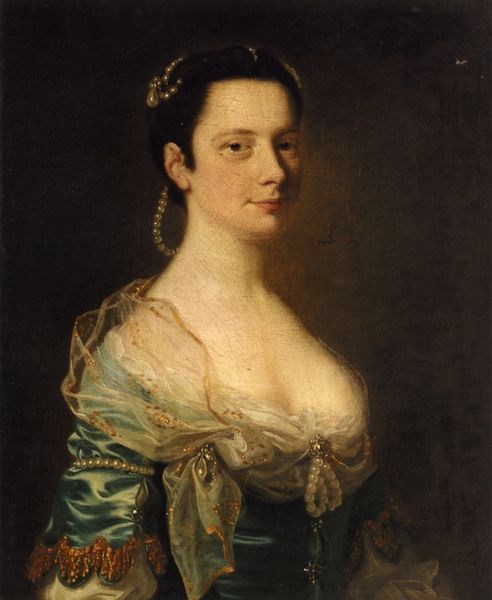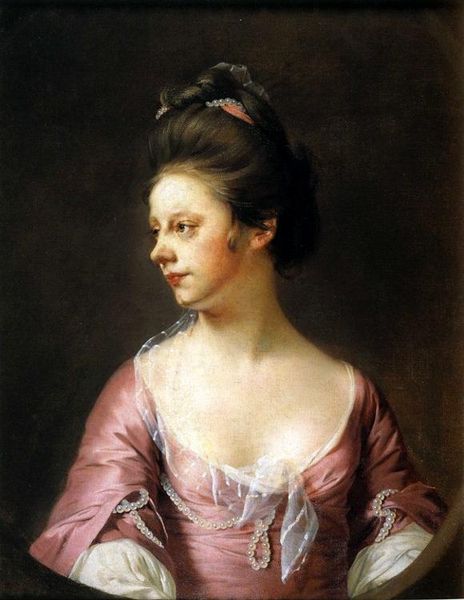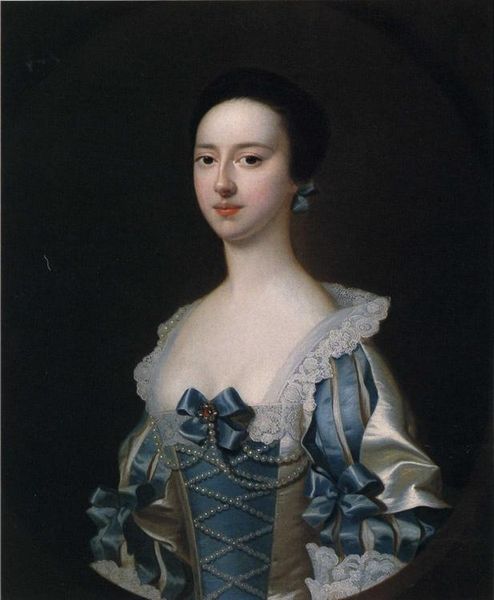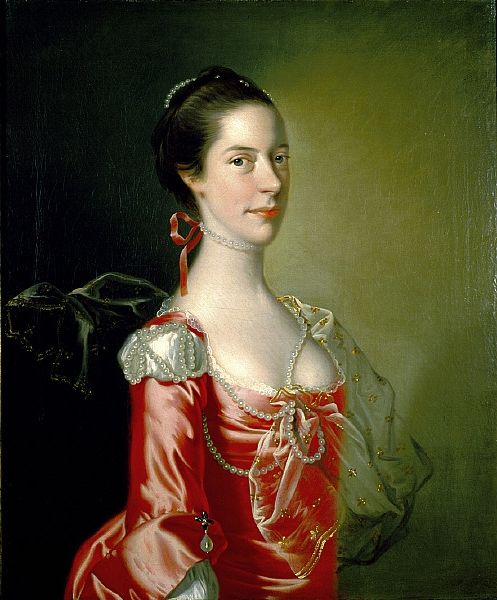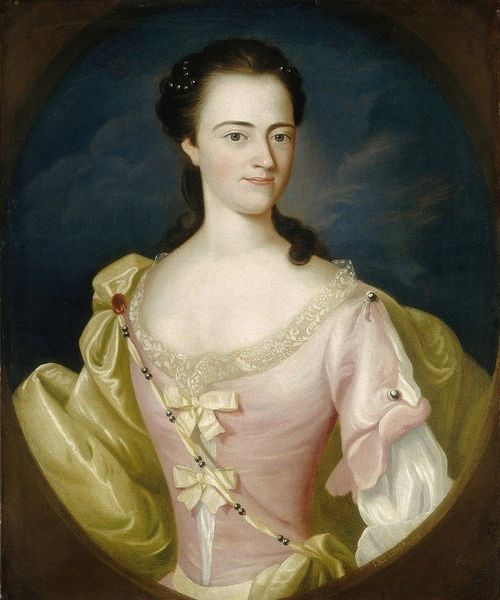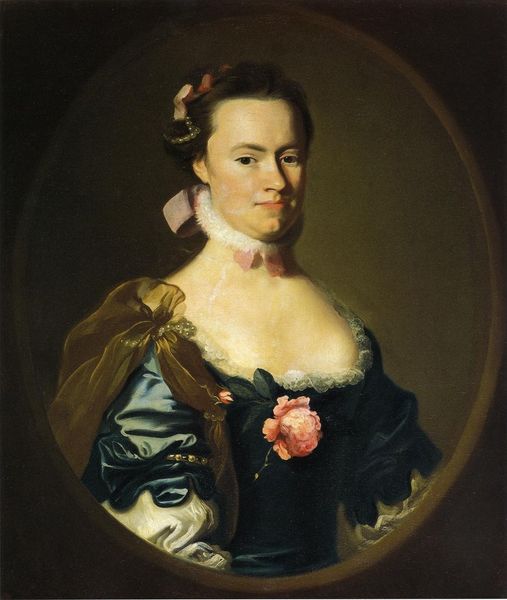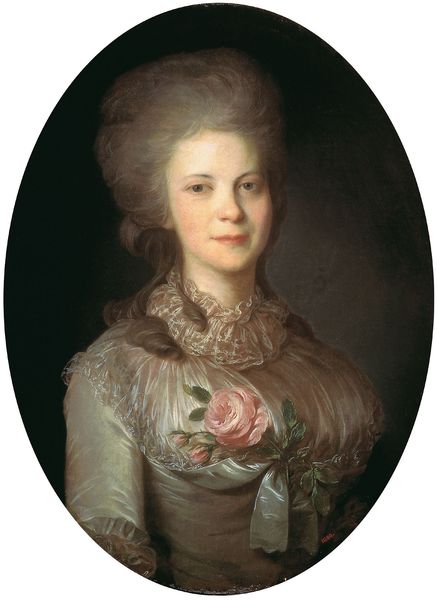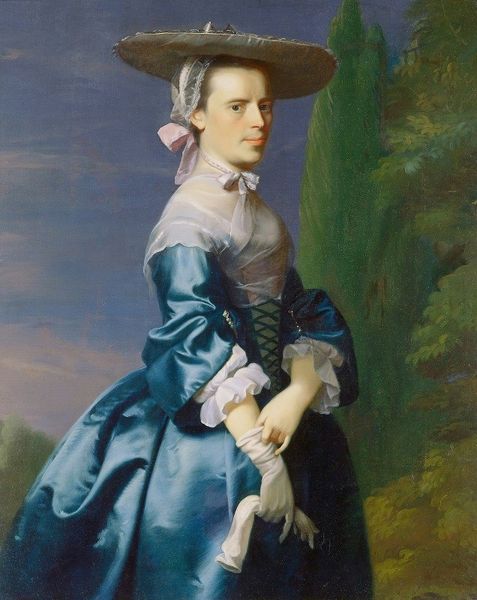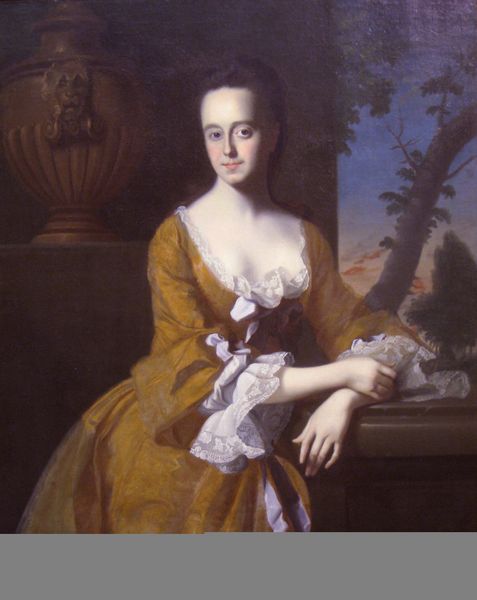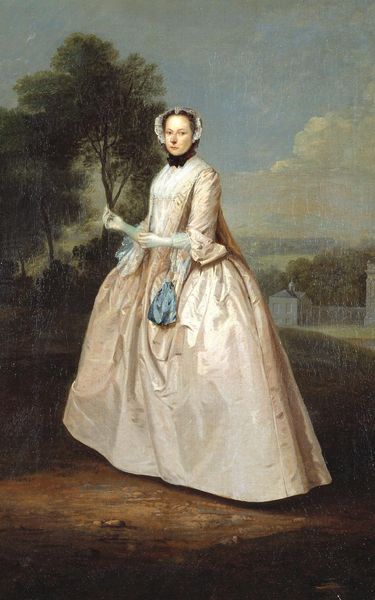
Portrait of Elizabeth Deering Wentworth Gould Rogers (also known as Mr. Nathaniel Rogers) 1765
0:00
0:00
Dimensions: 76.04 x 63.02 cm
Copyright: Public domain
Curator: Let's turn our attention to this portrait. Painted around 1765, it's John Singleton Copley's depiction of Elizabeth Deering Wentworth Gould Rogers, a prominent figure of colonial society. Editor: The immediate impression is one of cool elegance. The somber background and delicate blues create a serene, almost untouchable aura around the subject. Curator: Indeed, Copley captures the refinement of his sitter perfectly. He was highly sought-after within Boston's elite circles, portraying wealth and status. And that exquisite, milky satin dress signifies both high fashion and access to transatlantic trade routes. Editor: That pale blue feels so indicative of a specific class. Beyond status, I am drawn to her direct gaze. Those eyes reflect composure, yet they are hinting a sense of underlying pensiveness too. And then there's the abundance of pearls. Curator: The pearls certainly accentuate status, a symbol of purity and wealth. Their use also conforms to 18th-century portraiture conventions for elite women, solidifying Mrs. Rogers' place within the social order. It speaks volumes about the role and expected appearance of women. Editor: For me the pearl arrangement seems almost deliberate—ropes of tradition, and societal expectation subtly encaging the subject within defined social constructs. Look at the translucence and almost otherworldly veil effect over her chest, an almost dreamlike barrier against something. Curator: That's an interesting interpretation, the slightly transparent elements also contribute to a delicate aesthetic. Copley was keenly aware of what his patrons desired; they needed representation and glorification and preservation of the class structure. Editor: Absolutely, I do wonder about the individual woman, about the nuances he captured beyond the status she inhabited. How conscious were such sitters of their portrayal and what impact could these commissioned image have beyond the canvas itself? Curator: It makes you think about portraiture’s power in the 18th century, it was not merely depiction, it was almost manufacture. Editor: Exactly! Thank you. A lovely example of an American master navigating class and representation.
Comments
No comments
Be the first to comment and join the conversation on the ultimate creative platform.
